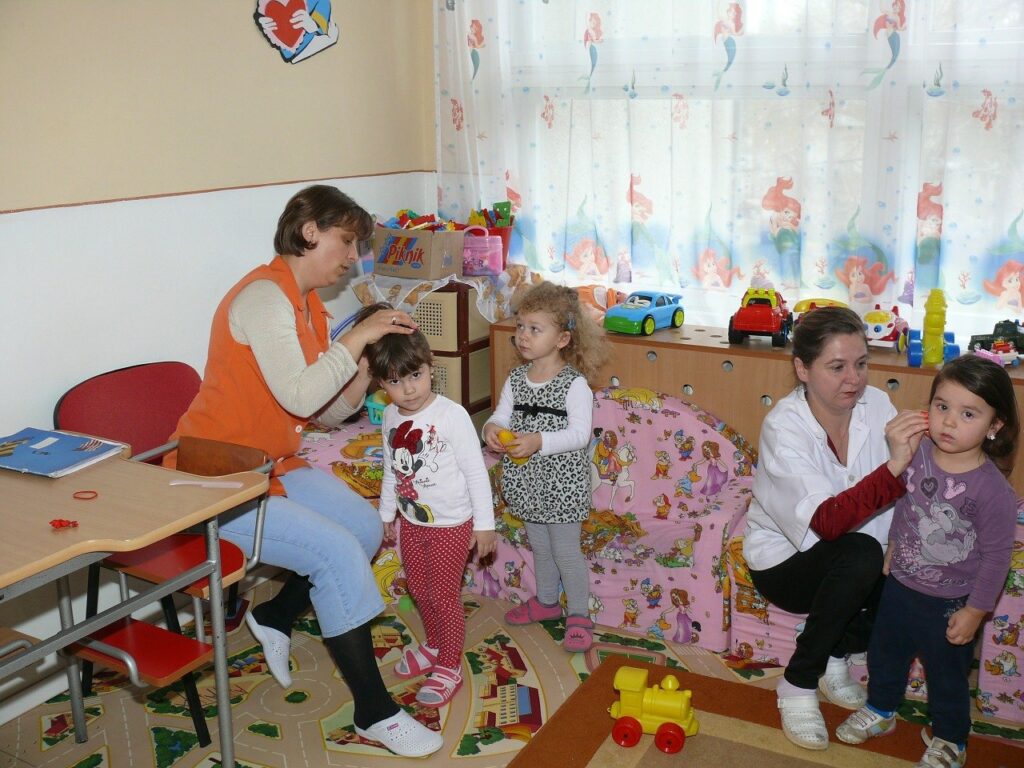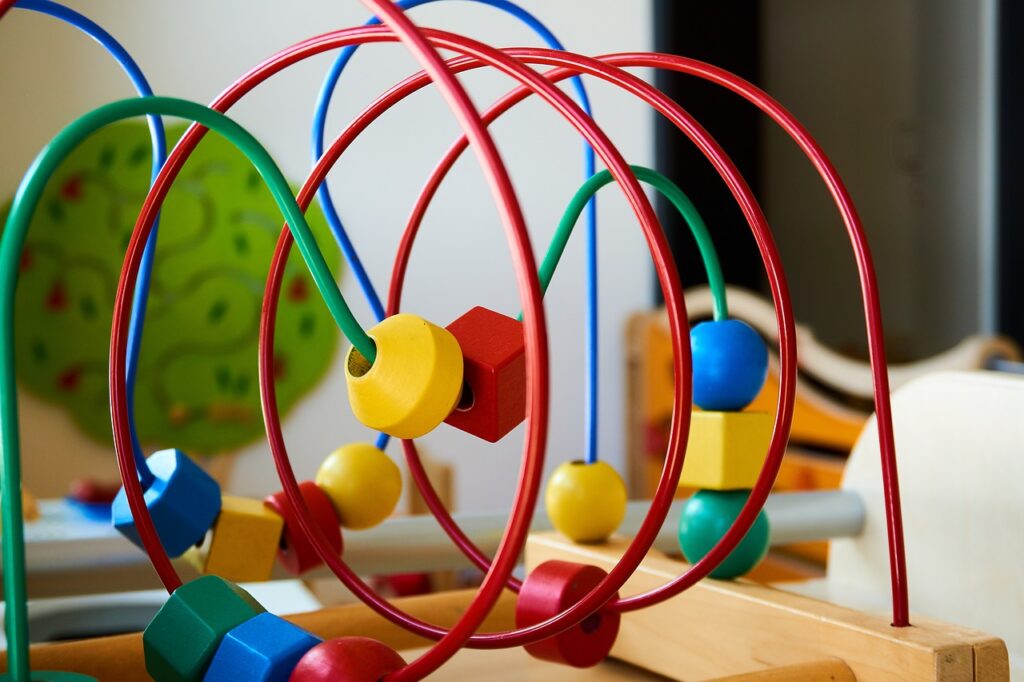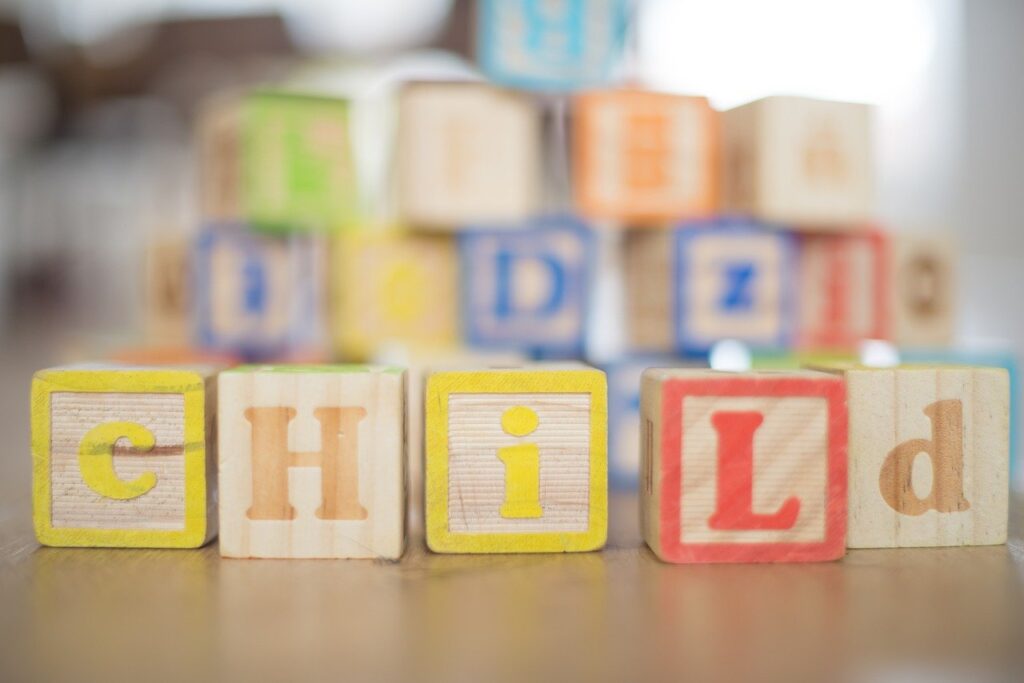The words "preschool" and "daycare" or "child care" may be used interchangeably among parents, but this is incorrect. While both offer great advantages to children, it is important to understand the difference between preschool vs. child care to make a choice that best suits your child's needs—one of the most notable differences in the ages of the kids that attend either program.
Child care programs typically accept children in the age range of about six weeks and older, while preschool is typically for children ages 2-5 years of age. In a preschool program, learning pre-academic skills is the main objective. Thus, the program focuses on the children's educational needs to prepare them for development in the years that follow.
For the most part, child care is about providing services to parents when they need it most — during the day's working hours. It focuses much more on games and free play than a preschool does. Babies, toddlers, and children have a safe and secure place to go where they will receive daily necessities such as feeding, napping, and activities. Although people may not think kids are learning at child care, they are.
Every child deserves the best possible care, so it is expected that parents will have questions when they are considering preschool vs. child care. Parents can rest assured that licensing is required for both preschool and child care, so their children are as well taken care of as possible no matter which program they choose. Staff is trained and qualified to deal with all the different situations that arise, and as any adult who has ever been in the presence of kids knows, no two days are alike! Now, every parent can be well-informed about the difference between preschool vs daycare.
Age of child
- Long Day Care Centres typically cater for children aged from 6 weeks to 5 years old.
- Preschools specifically cater for 3-5-year-olds.
Hours
- Long Day Care Centres usually run from 7.00/7.30am until 6-7 pm, and the centres are open for 48-50 weeks of the year.
- Preschools operate according to school terms, typically 42 weeks of the year, with hours 8:30 am – 3:30 pm (with some variations between centres).
Costs
The cost for child care, whether preschool or long daycare, can be complex. The Child Care Subsidy provides reduced fees by the Australian Government, but your Child Care Subsidy percentage and hours of subsidized care depend on:
- your family income
- the type of care you use
- The hours of activity you and your partner do.
In general, day rates at long daycare centres range from $100-180 per day, with a number of rebates and benefits applicable to qualifying families.
For preschool, the daily rates work out around $50-100 with access to fewer benefits and rebates.
What is a preschool?
Most preschools accept students from ages 3-5. These children are learning and growing but not old enough to attend kindergarten. Preschool provides a foundation for older toddlers to build on when they reach elementary school. These facilities typically follow similar schedules to regular school, meaning they are closed on holidays and during the summer. Preschool is often just half a day long, but some offer full days as well.
What is daycare?
Daycare is more geared toward providing a safe environment for children to stay when their parents are otherwise engaged. Kids here play with others of their age group. Daycare provides parents with the ability to go to work and not fret about leaving their kids with a babysitter or the expense of hiring a private nanny. Daycares do not follow a school schedule, offering longer hours and are open during holidays and school breaks. Infants to kids who aren't yet old enough to go to kindergarten are typically accepted into daycare.
Factors To Consider While Choosing A Preschool/ Daycare

Determine what you want for your child and your expectations from the preschool/ daycare. Here are a few things you may consider before making a decision:
Distance: See how far the centre is from your home/workplace.
- If it is a daycare, choose the one closest to your work so that you can drop your child just before you go to work and pick it up right after work.
- If it is preschool, it is good to have it near your house.
Time pent: Decide how many hours you want your child to spend in preschool/ daycare.
Preschools operate from 9 am to 12 pm, and daycares operate from 8 am to 8 pm.
Preschool-cum-daycare: Some preschools have daycares attached to them to provide childcare services after school hours.
- If you are considering a preschool with an attached daycare, you need to learn about the transition period from preschool to daycare. What happens when most of the kids leave, and your child is alone?
- If you are dropping your child at daycare even before the caretakers' arrive, you need to know to whom to give instructions about your child.
Curriculum: The preschool curriculum focuses on early life education, while a daycare focuses on childcare services and education and play.
- The centre should engage the child and help their cognitive, physical, social, and emotional development.
- A preschool should introduce language, phonetics, letters, numbers, environmental sciences, and culture-specific concepts to the child.
- Children learn best through play, so there should be a combination of free play and structured play.
- If the preschool is pressurizing the children with lots of homework, you might not want to enrol your child in such a school.
- Check if the activities are age-appropriate.
- The teacher-child relationship should be healthy. If the child is too scared of their teacher, it's not a good sign.
Education and formal staff training: Preschool staff undergo any formal training, while the same may not be the case with the daycare staff. Most preschools have a set of requirements that their employees have to meet.
- The preschool employees are usually selected based on their approach to children and the methods of teaching they use for a certain age group.
- Daycare is more relaxed in its approach towards the teachers and staff. In most cases, the staff do not have to attend an examination or interview to get recruited.
- In most states, the educational qualification required of a daycare staff is lower than that of a preschool employee.
Teacher-child interaction: You need to check the qualification of the teachers/ caretakers, their experience, and their attitude towards the children.
- A happy teacher/ caretaker will make a happy child. The teacher-child interaction should be affectionate and respectful.
- If the children are engaged in activities, and the teacher is preoccupied with something else, don't assume that she is not responsible. Effective teachers encourage children to be independent and resolve their conflicts while keeping an eye on them and interfering when required.
Fees and payment method: This is one of the more important points to consider.
- How much does the centre charge? If their fee structure is too high, do they offer the convenience of instalments? Is there any late fee policy?
- How does the daycare charge for the additional hours?
- Are there any extra charges for the snacks or activities?
The ratio of caretaker to children: It's fair for you to expect one-on-one attention on your child at the centre. So, check if:
- Your child gets attention even when there are too many kids. Especially if it's an infant, they need to keep an eye on him constantly.
- Select a preschool/ daycare where the teacher/ caretaker-child ratio is low.
Diaper rules: Diapers are necessary for preschoolers and infants.
- Most preschools are strict in their diaper policies and require your child to be potty trained before starting classes. But in daycares, potty training is part of childcare.
- If the child is already diaper-trained, it could be a bonus for you as there will not be any problems in starting a preschool.
- Most daycare centres take in children who are still in diapers, as they also care for younger babies who are not yet potty trained.
- Whether you are about to begin potty training your child or are already in the middle of it, you can still send your child to daycare and continue with the training at home.
Be aware of the daily routine: Remember that your child needs to be happy and comfortable with the general routine at the centre.
- Do they have activities such as storytelling, playtime, and dance or music?
- What is their snack time, study time, and playtime?
Food allergies: If your child has any food allergies, you must inform the preschool/ daycare personnel.
- Check how they are going to manage if your child develops any allergies.
- Do they have a nurse or a doctor in case of emergencies?
Tracking milestones: Your child will be spending some time away from you.
- You need to check with the preschool/ daycare if they have any program to track the child's milestones.
- You also need to keep the daycare personnel informed about the milestones your child is likely to reach during that specific time.
Interaction with other children: How do the centres facilitate social interaction and interpersonal interaction?
- Children in daycares are exposed to a mixed age group of kids. So, they get an opportunity to socialize with everyone, including caretakers.
- Interaction in preschools is limited to their age group of kids and teachers.
Which Should You Choose?

What do you want your child to get out his or her time while you're at work? Would you like those hour spent on purposeful learning or more social interaction and play? Do you prefer that licensed teachers or daycare providers supervise your child?
If you work irregular hours or a longer day than a 9-5, a daycare maybe your best option as preschools offer limited hours. Your child's age is also a factor as he or she may not be old enough to attend preschool yet but can go to daycare until that time comes. It's also important to consider cost when making this decision.
One way to get better insight into whether daycare or preschool is right for your child is to tour the facility. Talk with the teachers or care providers to learn about daily routines and get to know some individual staff members.
There is no right answer as to which option is best, but it can come down to how you like the facility (Is it clean and well-designed, with ample activities available?) and the people. Look for friendly and knowledgeable staff who can handle daily leadership and thrive in case of an emergency such as an injury or an allergic reaction. Daycares and preschools are held to high state standards, so you can be sure that wherever your child spends his or her weekdays will be safe and enriching.
What Is The Price Of Daycare And Preschool?
Ow, much do parents spend on centre-based daycare and preschool for their young children? In other words, what is the market price of these services? The answer is important for parents, Government, policymakers, and providers.
Using nationally representative data from the 2016 Early Childhood Program Participation Survey, I calculate hourly and annualized prices for parents who purchase at least eight hours a week of centre-based care for a child under five who does not have a disability and do so without outside financial help in paying the fees. The results are analyzed by the child's age, region of the country, parental education, parental income, and hours of attendance.
For the country as a whole, the median price for a family with the characteristics described above is $8,320 a year and $5.31 an hour. Families spend somewhat more in the Northeast and West and somewhat less in the South and Midwest.
Spending in absolute terms goes up with family income and education (e.g., a mean of $11,652 for families making more than $150k a year contrasted with $5,900 for families making from $50-60k a year). Conversely, spending as a percentage of the family income goes down with rising socioeconomic status (e.g., 7% for families making $100-$150k vs. 12% for those making from $50-60k). Spending is inverse to the child's age (e.g., $10,400 for infants vs. $6,500 for four-year-olds).
One of the most provocative findings is that infants receiving centre-based care for at least 8 hours a week, as is the case for older age groups in the sample, are in centre-based care for many more hours a week than older children. For example, the median weekly hours for such infants is 40, whereas it is 24 for four-year-olds.
The words “preschool” and “daycare” or “child care” may be used interchangeably among parents, but this is actually incorrect. ... Child care programs typically accept children in the age range of about 6 weeks and older, while preschool is typically for children ages 2-5 years of age.
Daycare is primarily for child care, though many have trained early childhood education staff. Preschool, meanwhile, is intended as a less-formal class setting to help bridge the gap between daycare and kindergarten.
“Day care” is the term many people still use to refer to out-of-home care for children during the day while their parents are at work. ... The term “child care” is more inclusive. Child care can be provided in a child care center, in a family child care home, or by family, friends, or neighbors.

